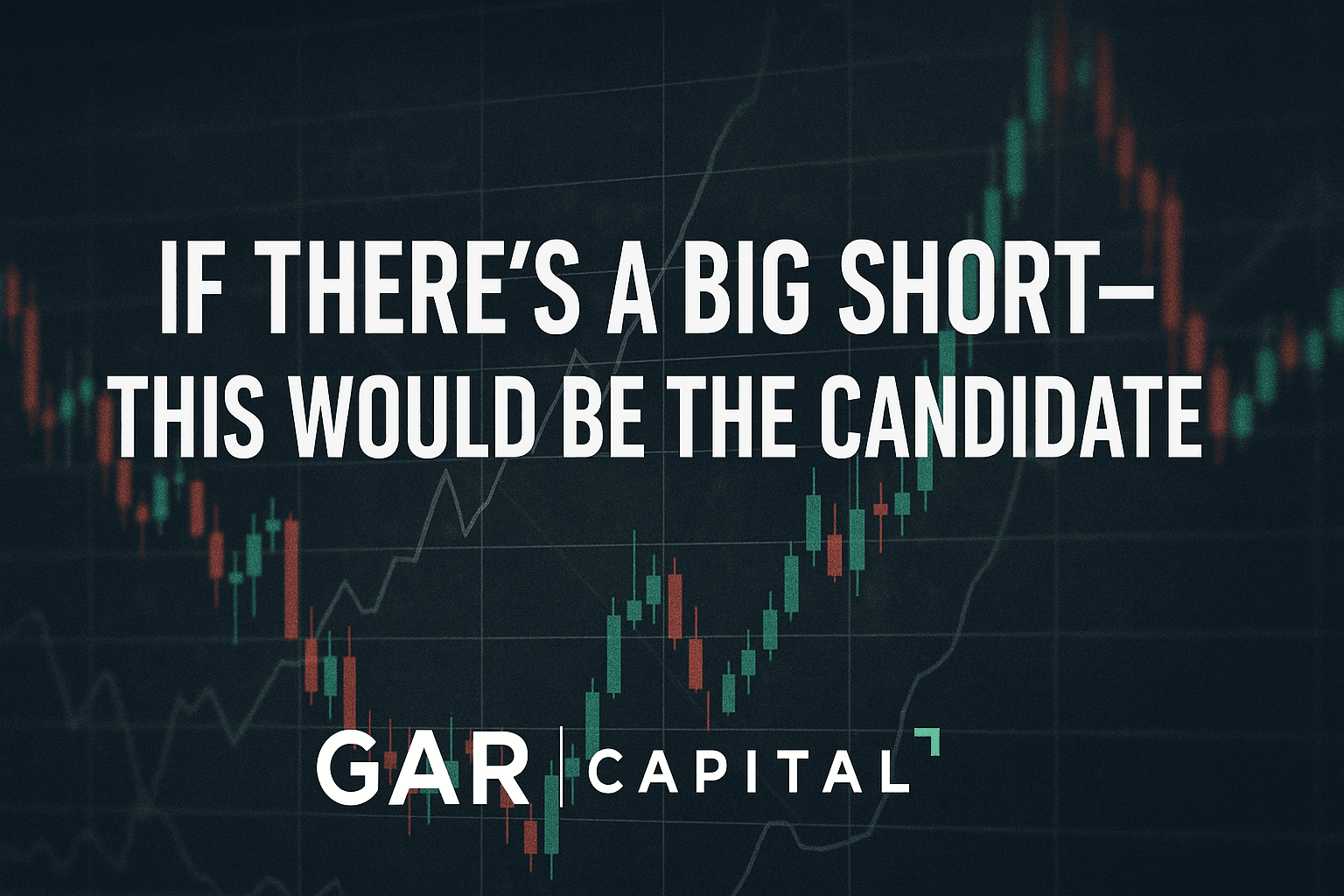Summary
A massive $2.2 trillion refinancing wave is approaching in 2026, and companies that borrowed at ultra-low rates will soon face much higher financing costs. This article breaks down why the corporate debt rollover, private equity leverage, and the rapid expansion of private credit could form the biggest structural risk of the next market cycle. Learn where the cracks may appear, how this compares to 2000 and 2008, and what defensive strategies investors should consider.
Market Movers
- 📈 Core PPI m/m: Nov 25, 2025
- 📈 Core Retail Sales m/m: Nov 25, 2025
- 📈 Unemployment Claims: Nov 26, 2025
- 📈 Thanksgiving US Holiday: Nov 27, 2025
📚 Deep Dive 📚
“If There’s a Big Short… This Would Be the Candidate”
Understanding the 2026 Refinancing Risk and Where the Cracks May Form
Over the last two years, markets have surged on AI enthusiasm, resilient consumer spending, and the expectation that the Federal Reserve would cut rates aggressively by 2024–2025. That environment has rewarded mega-cap tech, high-beta trading, and anything tied to the AI capital-expenditure boom.
But beneath the surface, a quieter and far more dangerous story is building — the refinancing wall of 2026.
If there is going to be a “Big Short–style” setup in the next cycle, this is where it starts.
This isn’t a prediction of imminent collapse. It’s an acknowledgment of structural risk — the same way 2000, 2007, and even 2020 showed us that markets don’t break from price action… they break from leverage colliding with tight liquidity.
2026 is where those forces meet.
1. What’s the Real Risk? The 2026 Refinancing Wall
Between 2025 and 2027, more than $2.2 trillion in U.S. corporate debt comes due — the largest maturity cluster since the Great Financial Crisis.
The single biggest year? 2026.
This is debt that was issued during:
- 2017–2019 at low rates
- the 2020–2021 stimulus era at ultra-low rates
- private-credit lenders with covenant-lite structures
These companies are now staring at refinancing costs that have doubled or tripled.
3% debt is about to become 8–12% debt.
Even strong companies will feel the squeeze. Weak companies may not survive it.
This is why refinancing risk has emerged as the pressure point of the upcoming cycle.
2. Private Equity: The Most Exposed Corner of the Market
Private equity survives by using leverage — not at the fund level, but at the portfolio company level.
These companies were often purchased at:
- 6x–9x debt-to-EBITDA
- floating rates tied to SOFR
- aggressive “adjusted EBITDA” add-backs
- covenant-lite loans with almost no oversight
When rates were 0%–2%, this debt was manageable.
Now? Floating-rate PE loans are resetting at 8–10%+, and much of this debt hits maturity around 2026–2028.
PE isn’t regulated like banks.
No reserve requirements.
No leverage ceilings.
No stress tests.
The risk isn’t the funds. It’s the companies they control.
If 2026 triggers cracks, this is where they will appear first.
3. Shadow Banking: Who’s Funding the Leverage?
Private credit funds — the new “shadow banks” — exploded over the last decade.
They offer:
- no FDIC insurance
- no capital requirements
- no stress testing
- higher yields (10%–15%)
- faster approvals and flexible structures
As traditional banks pulled back, private credit stepped in.
Now they control:
- LBO financing
- middle-market lending
- corporate refinancing
- real estate credit
- mezzanine deals
A massive portion of U.S. corporate credit is now in the hands of lightly regulated lenders — making the system more fragile during a refinancing wave.
4. Where Do the Mega Banks Stand?
Surprisingly, the largest U.S. banks are not the biggest risk-takers here.
Why big banks are safer this cycle:
- They offloaded leveraged loans years ago.
- Capital ratios are the highest in 40+ years.
- Post-2008 regulation forced cleaner balance sheets.
- Annual stress testing models deep recessions.
Cracks today are far more likely to appear in:
- private credit funds
- private equity portfolio companies
- commercial real estate
- mid-tier lenders
- regional banks tied to CRE
Mega-banks are more likely to become liquidity providers, not victims.
5. Why Elevated Rates Change Everything
The Fed may cut slowly, but it won’t solve the underlying issue:
Debt issued during 0%–2% rate environments must now be refinanced at 6%–10%.
That’s the entire story.
Earnings haven’t grown enough to offset this.
Margins are peaking.
AI spending is absorbing capital across the index.
It’s a pressure cooker.
6. Could This Trigger a Drawdown Like 2000, 2007, or 2020?
A quick comparison:
2000
- Overvaluation + slowing profits
- Concentration in tech
- No leverage crisis
- Slow, multi-year bleed
2007
- Systemic leverage + refinancing failures
- AAA assets that weren’t AAA
- Banks at the center
- Global financial crisis
2020
- External shock
- Instant liquidity freeze
- Solved with unlimited policy support
2026?
- Not a bank crisis
- Not a dot-com bubble
- Not a pandemic
This looks like:
tight credit + high refinancing costs + hidden PE leverage.
Cracks appear one refinancing at a time.
7. How Clients Protect Themselves (GAR Capital Playbook)
This is preparation, not panic.
Best defensive assets:
- Cash (dry powder = opportunity)
- Short-term Treasuries (4–5% yields, zero risk)
- Cash-rich mega-caps (AAPL, MSFT, GOOGL, BRK)
- Quality factor ETFs (QUAL, SCHD)
- Low-debt sectors (Health care, Staples, Utilities)
- Gold as a volatility hedge
Reduce exposure to:
- high-leverage companies
- firms dependent on constant refinancing
- PE-owned businesses
- speculative no-cash-flow growth
- regional banks heavily exposed to CRE
Opportunities come later — after leverage washes out, just like 2002, 2009, and 2020.
8. Final Word: The “Big Short” Is Never Where You Expect It
The next crisis isn’t about banks, the Fed, or the AI boom.
It’s about debt:
- debt that was cheap
- debt that is now expensive
- debt that must roll over in 2026–2028 at rates companies were never built to handle
If you’re looking for a potential “Big Short,” this is the candidate.
And if you’re looking for how to survive it —
quality, liquidity, strong balance sheets, and cash flow remain your compass.
This isn’t fear.
This is preparation — the kind smart investors do before the storm, not after.


